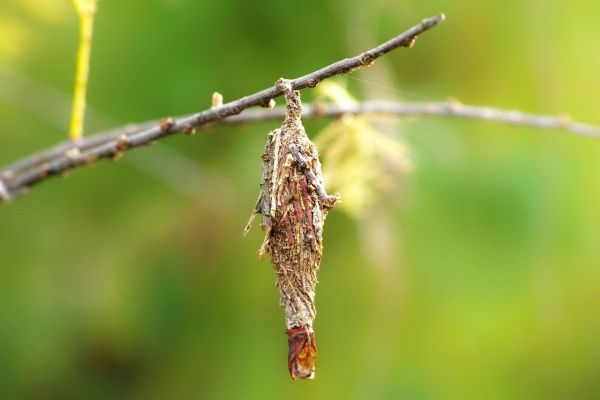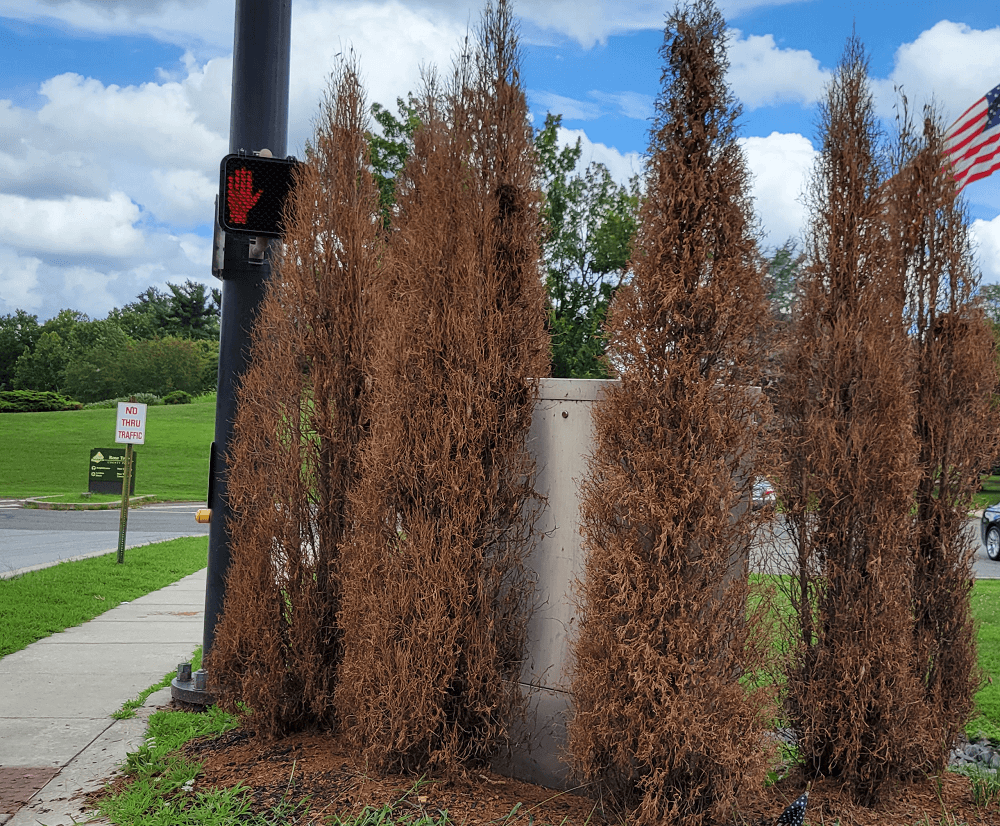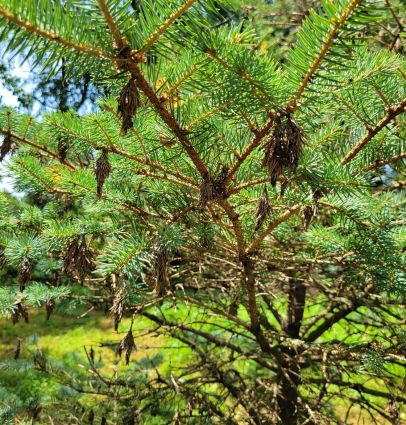What are Bagworms?
Bagworms are a common pest in the United States. The bagworm (Thyridopteryx ephemeraeformis) is small, about 1/4 inch long, and very active. Bagworms are the larvae of Psychid moths, a type of moth considered a pest. Bagworms are no threat to humans but can damage plant life and wood structures (such as decks) if left untreated for too long.
Life Cycle of Bagworms
Bagworms live their entire life cycles on the plant or tree the insects feed on. Therefore, bagworm activity is probably nearby if you see bags hanging from trees and shrubs during the spring or summer.
Bagworm moths lay eggs on the underside of leaves in spring and summer. Adult female bagworms lay nearly 1,000 eggs in each bag. The eggs then hatch into tiny bagworm caterpillars and spin a series of silk threads that connect them to branches or twigs. Next, the caterpillar creates protective “bags” out of leaves, needles, or flower petals that can be up to two inches long.
Next the caterpillar feeds inside these little cocoons until pupating into an adult moth (or egg-laying female). In this cocoon-like covering, the caterpillars remain dormant until mid-June through early August, emerging as adult moths to mate and produce new generations of bagworms. This cycle repeats every year until killed by cold weather or pesticides.

Behavior
The bags that bagworms make for themselves are protective but also serve as an effective way for them to move around. When the time comes for them to find a new place, the pests detach themselves from their bag and let the bag fall. When we see large clumps falling from trees like this, we know plenty of bagworm larvae are inside.
Bagworms primarily eat evergreen trees and bushes but can feed on more than 120 species of plants. A bagworm will also feed on ornamental plantings such as maples, conifers, crabapples, and cranberry bushes. These insects are some of the most common pests that attack shade trees in our landscapes.
In rare cases, bagworms will also eat deciduous trees and shrubs. These pests are most commonly found on evergreens such as spruce and pine trees but can also be found on other plants like rhododendron bushes.

Damage
Bagworm larvae damage plants by feeding on needles and leaves. Young bagworms feed on the upper epidermis of host plants, leaving tiny holes in the foliage. Damage by mature larvae is incredibly destructive to evergreen plants, such as cedar, juniper, and arborvitae.
Identifying Signs of Bagworms
Identifying these pests and taking steps to eliminate them before they cause significant damage is important. Because of their unique appearance, bagworms often go unnoticed until the infestation is extensive. Many homeowners are unaware of the presence of bagworms until the pest is in enormous numbers. The caterpillars often build their homes on top of trees or other plants, allowing them to grow unobserved for months or even years.
A plant health care expert can identify a bagworm infestation by finding the telltale silk bags with small pieces of host plant material attached to them. These bags can be any color, from white to brown, typically ranging from 1/2 inch to 3 inches long. Bagworm larvae live inside these protective linings during their development stages.
Controlling & Removing Bagworms
Luckily, several methods can be used to prevent infestations from occurring in your yard. First, the process involves removing the bags from the trees and bushes. Many homeowners can be anxious or nervous about removing the bags, so working with a plant health care specialist is ideal. After removing the bags, the PHC specialist will spray the plants with a combination of soap, oil, or insecticide and repeat this process to remove any remaining larvae.
Second, a plant health care expert can use insecticides to kill the bagworms in your trees and bushes. The insecticide must contain specific chemicals to eliminate and reduce bagworm populations effectively. The best time to spray is during the early morning hours when temperatures are cool.

Contact Burkholder PHC for Help Controlling Bagworms
Bagworms can be a significant issue for homeowners and their plants. If you want to keep your landscape safe from them, reach out to Burkholder PHC. Our arborists will conduct a plant health care evaluation and diagnosis of your landscape and inform you of your treatment options. Burkholder PHC provides no-cost identification of the situation in addition to free testing, diagnostics, inspections, and evaluations. Contact us today for a free consultation.

